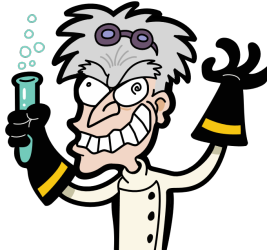 Many Americans naively believe that the government protects them from harmful chemicals. God only knows where that idea came from! Chemicals that are restricted or banned in Europe are still in use in the US, most of which have never been tested for safety.
Many Americans naively believe that the government protects them from harmful chemicals. God only knows where that idea came from! Chemicals that are restricted or banned in Europe are still in use in the US, most of which have never been tested for safety.
The 1976 Toxic Substances Control Act (TSCA), passed to supposedly protect us, was nothing more than a compromise between chemical manufacturers and Congress, another federal “feel good” regulation that did nothing and still does nothing to eliminate dangerous chemicals from our food or from the products that we rely on.
Under TSCA, companies are only required to alert the EPA before manufacturing or importing new chemicals and then it becomes the EPA’s job to review “academic” or “industry” data or use “computer modeling” to determine whether the chemical poses a danger to humans or the environment. Unfortunately, under TSCA the EPA cannot require testing to determine the chemical’s risk without first knowing a risk is likely. So, if the EPA chooses not to block the new chemical within 90 days, the chemical is, by default, given a green light.
A prime example of dangerous chemicals still in use today are Phthalates, which are a group of chemicals used to soften and increase the flexibility of plastic and vinyl. Phthalates are used in hundreds of consumer products such as cosmetics, perfumes, hair spray, soap, shampoo, nail polish, skin moisturizers, wood finishes, paint, detergents, adhesives, plumbing pipes, lubricants, medical tubing and fluid bags, solvents, insecticides, medical devices, building materials, shower curtains, wallpaper, vinyl mini-blinds, food packaging, plastic wrap, and vinyl flooring. And prior to 1999, they were also in infant pacifiers, soft rattles, and teethers. .
Phthalates are next to impossible to avoid. A 2013 study, for example, found that milk, even packaged in glass may have passed through plastic tubes on its way from the cow to the bottle, taking DEHP along with it. Imported organic spices are another surprising source of phthalate exposure, as is food packaged in plastic that contain phthalates. You can also be exposed by breathing dust in your home from vinyls, paints or wood finishes, or working in the manufacture, formulation, and processing of plastics. And let’s not forget those plastic water bottles.
In the past few years, researchers have linked phthalates to asthma, attention-deficit hyperactivity disorder, breast cancer, obesity, and type II diabetes, low IQ, neurodevelopment issues, behavioral issues, autism spectrum disorders, altered reproductive development and male fertility issues. Phthalates are suspected to be endocrine disruptor.
In 2003 researchers at the CDC documented widespread exposure to high levels of phthalates and recommended that the chemical and their effect on human health be studied further but it wasn’t until five years later (2008) that Congress acted to ban the use of some phthalates in children’s products, passed an interim ban on others and required that the Consumer Product Safety Commission take a closer look at the chemical. Another two years passed before the EPA got off their butt and put phthalates on a list of chemicals that “may” present a risk to the environment and, oh yes, human health.
The Chronic Hazard Advisory Panel (CHAP) was finalized in late 2014 and despite the chemical industry’s efforts to soften their recommendations, CHAP concluded that while most phthalate exposures and risks come from food and personal care products, outside their jurisdiction, it also determined that exposures from children’s toys and child care articles, “while relatively small, contribute to the overall risk,” and recommended adding a number of phthalates to either the interim or permanent ban, change the interim ban on DINP to permanent.
As long as government is in the pocket of chemical manufacturers, [Big Agriculture, Pharmaceutical, etc] nothing will stop the production of nearly 6 million tons of phthalates every year. It’s up to consumers. Make your voice heard! And until some actually listens, avoid products packaged in “recycling-code-3” plastic and any product that includes the vague ingedient “fragrance” on thier label, and let the manufacturer know why. Remember, DEHP will continue to leech over time so remove food products from plastic packaging and store them in glass containers. Buy organic whenever possible and buy in glass containers.

